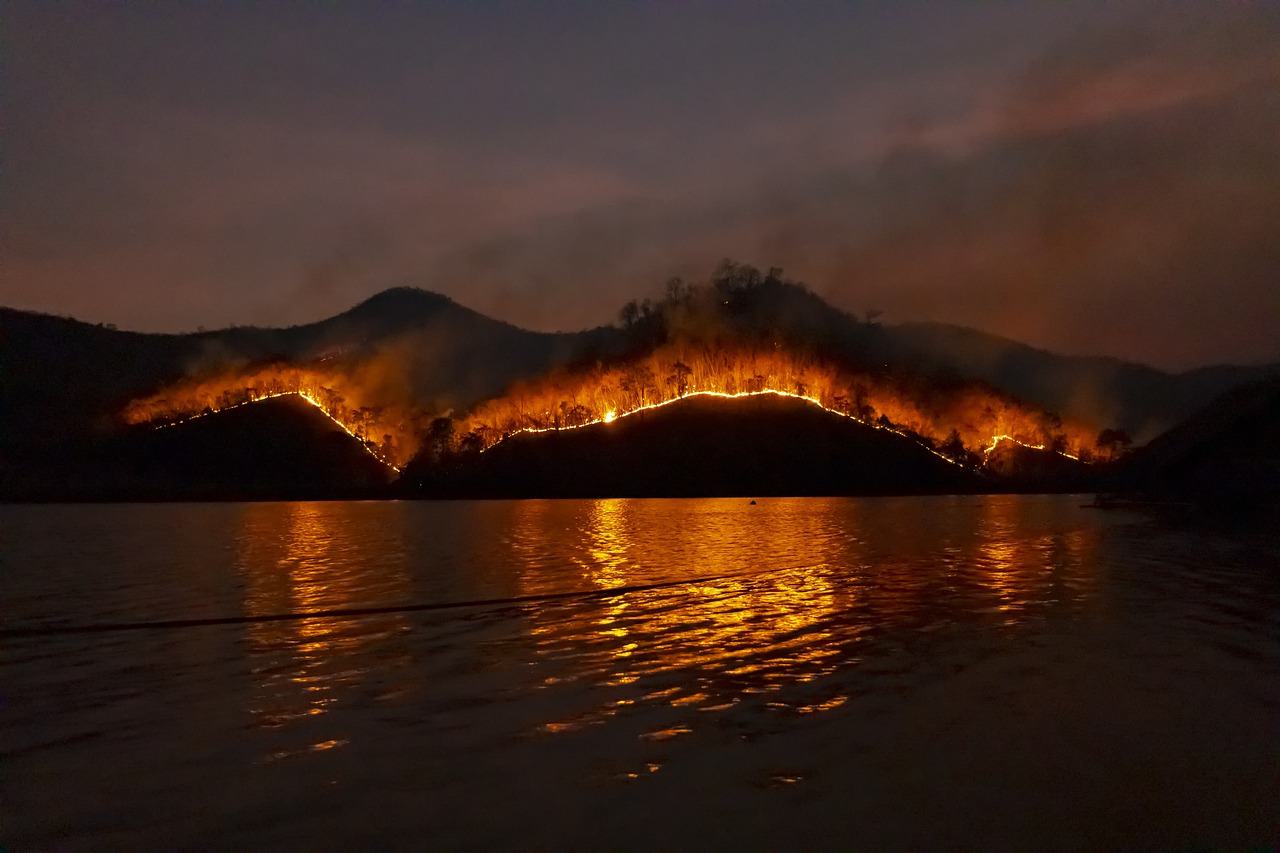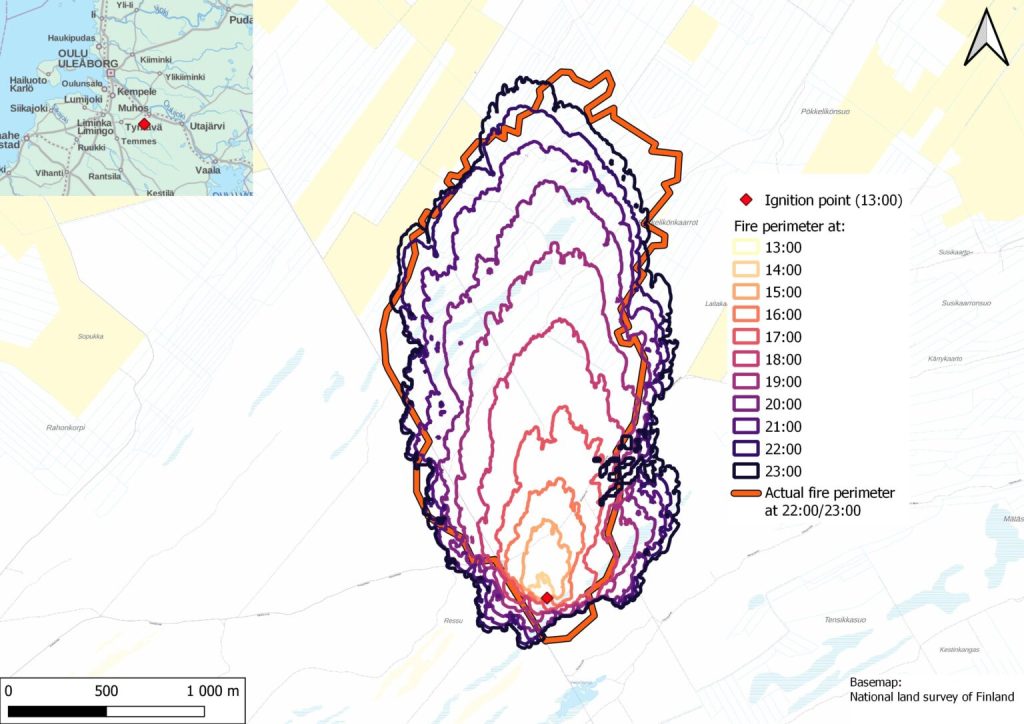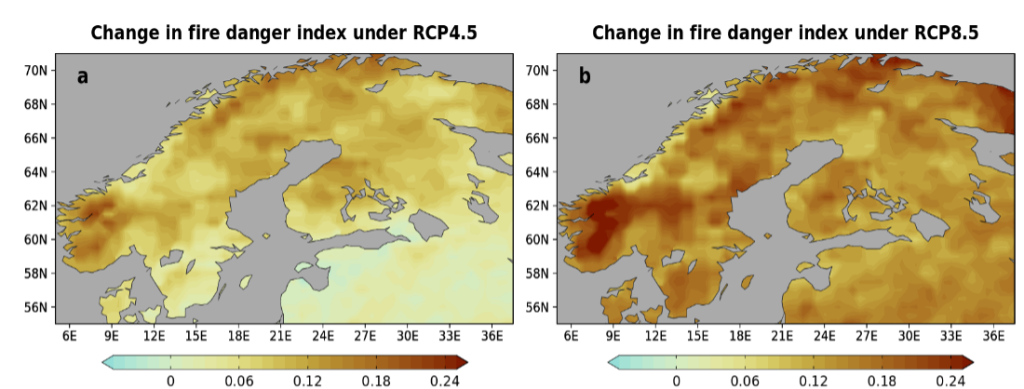
Wildfires Evolution
September 2022 - April 2026
Providing a refined view of wildfire risks in a changing climate.
In a nutshell
- In recent years, Europe has been affected by an increasing number of wildfires. The warmer and drier weather conditions caused by climate change are considered as one of the factors that affects wildfire frequency and spread.
- The goal of this use case is to provide tools to assess the present and future wildfire risk and potential solutions thanks to the capabilities of the Climate DT.
- The developed tools help decision-makers to obtain more accurate information for risk estimation and climate adaptation policy.
Technical Overview
- Use Case Topic: Forestry / Wildfires
- Scale of the Use Case: National
- Policy addressed: Sustainable forest management
- Providers: CSC-IT Center for Science
Challenge
The occurrence of wildfires, as well as the duration of the fire season, are rapidly escalating throughout the world. The factors that often influence the nature of wildfire include temperature, vegetation cover, soil moisture, humidity. With the increasing temperatures, altered precipitation patterns and extended drought periods fuelled by climate change, the likelihood of extreme wildfires is projected to further grow. This, in turn, exerts stress on the planet’s ecosystem and the communities that populate the areas at risk.
To tackle the challenges exacerbated by climate change and protect the vulnerable areas, there is an urgent need to strengthen emergency preparedness and response capacity. To achieve this, common efforts should be targeted at refining the weather and fire monitoring systems, as well as ensuring the availability of data for decision-makers and civil protection agencies.
DestinE Solution
The Finnish forestry management project HIILIPOLKU and the North Karelian-Rescue Services are the key users of this use case, seeking to provide detailed information about the potential evolution of wildfires for Finland, initially and for the Northern Hemisphere at further stages.
The application combines the mechanistic fire model Spitfire, of which a Python version was created especially for this use case, with the Prometheus fire growth model, developed by several Canadian agencies and the Canadian forest fire weather index.
The combination of adjustable fuel, landscape pattern and topography information and the data from the Climate DT runs on the LUMI supercomputer provides enhanced simulations of the potential evolution of wildfires in a changing climate.

Impact
This use case provides a refined view of wildfire risks in a changing climate by combining the applications involved with the capabilities of the Climate DT. The project develops tools for assessing the present and future wildfire risk and potential solutions applicable to the Northern Hemisphere, even though the initial experiments are applying only to Finland.
Decision-makers have improved information for risk estimation and adaptation policies at spatial scales similar to those used operationally by fire forecast and emergency services. High resolution input data from users on landscape patterns and fuel amount to the wildfire application allows to quantify to what extent land use and forestry practices influence fire risk.
By providing a better understanding of wildfire risk and spreading characteristics related to the landscape variability, this application benefits users such as policymakers and experts through specialised centres such as EFFIS – European Forest Fire Information System, and national and international adaptation bodies involved in adaptation policies, e.g. the EEA (European Environment Agency).



